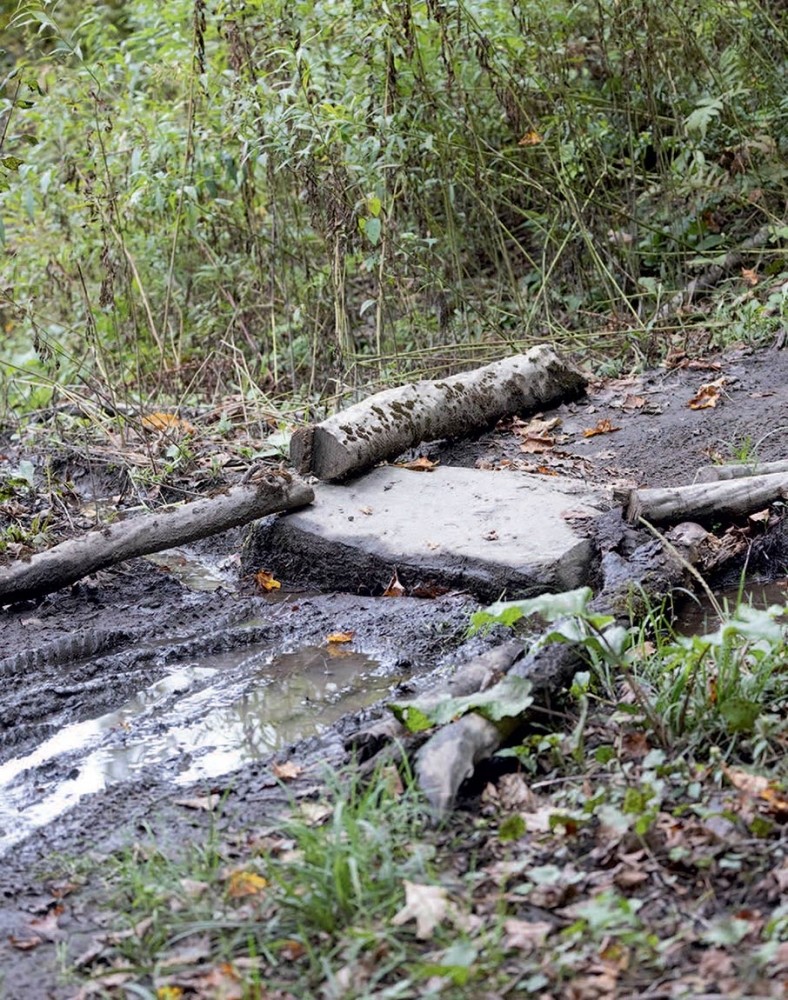With all the extreme weather events we’ve been having, I’ve been seeing lots of erosion on our access roads and skid trails. I’m concerned about losing access to my land and negatively impacting water quality. How can I make my forest roads and trails more resilient?
Managing our forests for climate change resilience includes planning ahead for the impacts of extreme weather on infrastructure. As we experience precipitation events of increasing frequency and severity – such as this past July’s flooding in Vermont and New York – forest roads and trails become increasingly vulnerable. In addition to short-term challenges such as loss of access, heavy rain can cause erosion, washing soil into waterways, degrading water quality and aquatic habitat with sediment, and adding harmful levels of nutrients such as phosphorus, which can cause algal blooms.
For both roads and trails, the simplest and best tool at our disposal is waterbars. A waterbar is essentially a shallow ditch with a berm on its downhill side that diverts water off the surface of a trail or road. While you may be able to install a simple waterbar (or maintain existing waterbars) with a shovel, installing resilient, long-lasting waterbars on skid trails and truck roads will likely require an excavator or bulldozer. Each state in New England has guidance on forestry Best Management Practices, or BMPs (called Acceptable Management Practices, or AMPs, in Vermont) that provide more information about how to install waterbars and other water-quality protections. These resources are available online, as well as through your local extension forester, county forester, or state forestry department.
While waterbars are traditionally installed after logging, I encourage landowners to invest in their forest management infrastructure – roads, trails, and landings – before logging. This usually includes installing waterbars (or log-reinforced waterbars for summer projects), which help keep trails stable and protect water quality throughout the duration of a harvest. It may also include decomissioning unstable historic skid trails and stream crossings as well as building new sections of more resilient skid trail. Sometimes loggers are willing to do this work themselves as part of their logging contract, or to deduct the cost of trail improvement work from the stumpage eventually owed to the landowner.
One problem with forest management infrastructure that I frequently encounter is culverts, especially undersized culverts installed in stream crossings. In heavy rain events, these culverts can become plugged with debris or overwhelmed by increased stream flow. This can cause the soil overtopping them to be deposited downstream, and sometimes also can cause a large section of skid trail or truck road to wash out. In many cases, culverts installed where trails cross streams are doing more harm than good and should be removed. If a culvert is on a road or trail that you often use, install a properly sized culvert (see your state’s BMPs) or a bridge. A “ford” is another simple option; where a crossing will be used for occasional vehicle access and a stream has a hard, cobbly channel, it might be a lower impact option to drive across it than to install a culvert.
The last piece in this puzzle is maintenance and adaptability. I find that I learn a lot – and can solve many problems – by walking my roads and trails in the rain with a shovel in my hand, watching where the water goes and diverting it when necessary. Even if everything is installed perfectly, waterbars will need to be periodically shoveled out, culverts unplugged, and trails, roads, and landings monitored for signs of erosion. In a changing climate, we may find that roads or trails that have been serving us well for decades need to be altered and upgraded. As with so many parts of forest stewardship, when dealing with roads and trails it is up to us to pay attention and to adapt to protect the things that matter.


